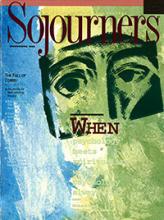Peru today displays all the elements of a historic tragedy: a 10-year standoff between powerful and murderous guerrillas on one side and brutal military forces on the other; in the middle, a fear-filled yet courageous populace, including foreign religious workers who agonize over whether to leave their posts or remain; and lurking in the background, a U.S. military presence, fresh from its Middle East "triumph," willing, perhaps even eager, to carry out yet another foreign crusade.
The "Shining Path" (Sendero Luminoso), the self-styled Maoist guerrillas, seem poised to move from their controlled areas north and south of Lima in a final offensive against the capital city. When they will strike is anyone's guess, as these insurgents have heretofore exhibited no impatience whatsoever in their decade-long drive for power. Their latest target is any foreign personnel, including church workers, who are making efforts to alleviate Peru's endemic hunger and misery (see accompanying story).
The Peruvian military has shown itself to be no better than the guerrillas. In recent years the military has committed widespread crimes against the human rights of its own citizens under the guise of combating the Shining Path. One Peruvian military officer has estimated that 600,000 deaths would be the price of excising the cancer that is known in Peru simply as Sendero. Others have placed the cost of doing away with the guerrilla networks at two million dead, likening it to the Dirty War waged against Argentine urban guerrillas in the mid-'70s, which totally discredited the military establishment there.
Read the Full Article

